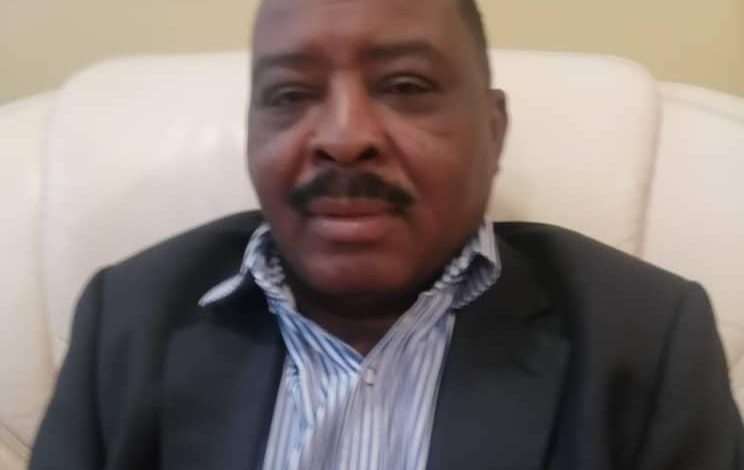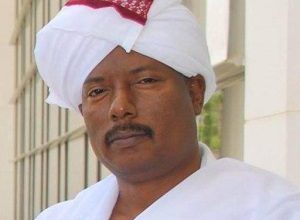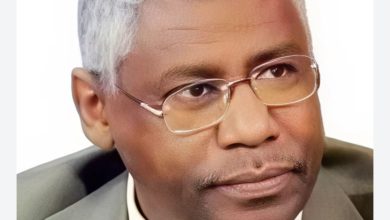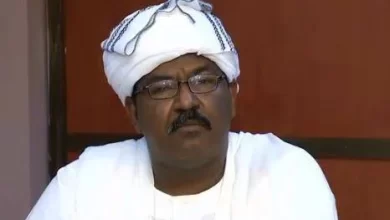France…The Maker of Massacres and Coups

By: Bushara Suleiman Nour
Perhaps many Sudanese do not know the bloody French history during the traditional colonial period. Fortunately for the Sudanese, France was not able to colonize Sudan. It was confronted in two attempts to colonize our country, from the southern side through the Battle of Fashoda during the British colonization of Sudan, and from the western side, where it was confronted by the Masalit Sultanate under the leadership of Sultan Taj Al-Din. It seems that the heroic Sudanese steadfastness in that battle is the reason behind all this evil that France is now practicing against the Sudanese people by supporting the crimes committed by the rebel militia, including killing, displacement, destruction, and plundering. It is necessary, and has always been, for some politicians isolated from their popular grassroots and their national principles to perform Hajj and circumambulation in Paris, is to remind the Sudanese people of the French history based on making coups and committing massacres, and in this way it is easier to explain France’s alliance with the rebel militia and the various politicians supporting it.
France’s colonial history is full of massacres. It committed many human rights violations throughout its history during the establishment of colonies in all parts of the world, especially the African continent, which witnessed scenes of slavery, massacres and racial discrimination that did not occur day and night, to subjugate the “indigenous people” culturally and humanely. No day passes in France’s colonial history in Africa, without witnessing France’s crimes and massacres against Africans, and we take some of the most famous massacres committed by France on the African continent.
The Ketchoua massacre: when France killed 4,000 Algerian worshippers
Algeria is one of the countries against which colonial France committed the largest number of massacres. During the period of French colonization of Algeria, which extended for 132 years, France killed more than 6 million Algerians, a million and a half of whom it killed only during the period of the liberation revolution from 1954 to 1962, the year of Algeria’s independence.
As soon as it entered Algeria in the year 1830, France opened its record of massacres against Algerians, through the massacre of the Ketchoua Mosque, when the French ruler of Algeria at the time, the “Duc de Rovigo,” wanted, at the end of the year 1832, to storm the mosque to turn it into a church, and amidst the refusal of the city’s residents who had staged a sit-in inside it, he By demolishing it on those in it; Causing the death of 4,000 worshipers inside the mosque, he also converted the mosque into a stable for horses.
May 8 massacre:
45 thousand Algerians were killed in 15 days. After the end of World War II and the victory of the Allies, the Algerians went out on May 8, 1945, in demonstrations to demand that France fulfill its promises to them of independence if they participated in the war and helped France, raising the slogan “Long live independent Algeria.”
During those demonstrations, the Algerian flag appeared for the first time, so the French colonial authorities issued an order to remove the banners and flags, but the young Algerian Bouzid Saal refused to lower the Algerian flag, so clashes broke out, and a policeman opened fire and killed Bouzid Saal. A state of panic broke out among the demonstrators and this was the beginning of the great massacre.
During that massacre, the French army destroyed 44 villages within 15 days, while carrying out air strikes that killed hundreds of residents, including women, children, and the elderly.
The outcome of the massacre was 45,000 Algerian martyrs, while some statistics state that the number reached 70,000 martyrs, in addition to the arrest of more than 5,000 Algerians. The arrests continued for months after the massacre, with the courts issuing thousands of death sentences in October of the same year.
French nuclear tests in Algeria…the crime that continues until now
We cannot ignore the French nuclear tests, the effects of which are still continuing to this day among the residents of the Algerian city of Reggane. The first French nuclear explosion was in the desert of the populated Reggane region, on February 13, 1960 AD, when France launched its first nuclear bombs there, which were under the name “Blue Jerboa”, it was a bomb whose power was comparable to 4 bombs such as the Hiroshima bomb. The Blue Jerboa bomb formed the beginning of a long series of nuclear tests, the number of which reached 57 tests during which 17 nuclear bombs were detonated, four of which were highly polluted in the air, then there were 13 underground bombs in the middle of the mountains. Despite its departure from Algeria in 1962 AD, France continued its nuclear tests; the last of which was on February 16, 1966 AD, which France considered its last nuclear test in Algeria.
The negative effects of these experiences continue to this day between generations in the Reggane region of Algeria.
Rwandan massacre:
France caused the death of 800,000 Rwandans on April 6, 1994, and bombed the plane carrying Rwandan President Juvenal Habyarimana and his Burundian counterpart, Cyprien Ntaryamira, killing all those on board. In less than 24 hours of that incident, widespread killings of Tutsi tribes began in The Rwandan capital, Kigali, after Hutu extremists accused the rebel National Front group of being responsible for bombing the plane, and immediately began an organized campaign to kill the Tutsis and eliminate them completely. While the Rwandan Patriotic Front said that it was the Hutus who shot down the plane as a pretext for carrying out genocide, France was the largest supporter. To the ruling Hutu government, by providing many weapons to the Hutu government, and French banks also provided facilities and credits for arms deals that Rwanda concluded with China, Egypt, and South Africa, despite its knowledge of the repercussions of the massacre, at the height of the genocide between April 19 and July 18, 1994. Six shipments of French weapons worth $5,454,395 were delivered to the Hutu government.
Jean-Paul Goto narrates in the book “The Rwandan Night” that French military aid led to an increase in the Rwandan armed forces from about 5,000 to approximately 50,000, and Paris sponsored their training and arming.
On May 6, 1994, General Christian Quesnot – Chief of Staff of President François Mitterrand – wrote a memorandum in which he stressed, “In the absence of a direct strategy in the region that may seem difficult to implement politically, we have indirect strategic means and keys that can It restores a certain balance.” Paris also played these pivotal roles through important figures close to the Elysee Palace and the French Chief of Staff at the time, most notably Bob Denard, the French military man who led mercenary forces working alongside the army and Hutu militias.
In addition to French police officer Bob Barrel, who was working to recruit mercenaries for the Rwandan genocide. The French role in the massacre was not limited to providing military and logistical support. Rather, Paris worked to ensure that those responsible for the massacre escape from Rwanda. On June 23, it fired France “Operation Turquoise”, meaning the French humanitarian corridor, through which it contributed to arming and escaping thousands of Hutu participants in the massacres. According to a UN report issued in 2014, it is estimated that between 100,000 and 250,000 women were raped during the massacre, and many of them were women. Those who survived the massacre are now either infected with HIV or dying of AIDS, and there are about one million orphans in Rwanda as a result of HIV/AIDS and the 1994 genocide.
An important study conducted by researchers at the University of South Florida and the Center for Global Health and Infectious Disease Research in the United States on a map of the genetic material of Tutsi women who lived through the Rwandan genocide in the mid-nineties revealed changes in their DNA. What affected the genetic functions of those born there?
Kabkab massacre in Chad:
After occupying Algeria, Senegal, and Mali, and its incursion into Central Africa, France began its expansion deep into the desert of the African continent, targeting the country of Chad.
By the end of the nineteenth century, Chad was under the command of Rabah al-Zubair bin Fadlallah, the Sudanese leader who established a powerful empire west of Lake Chad, taking Islamic law as a basis for rule, and the Qur’an as a constitution, and headed west to spread Islam. Rabah’s state represented the first obstacle to France’s expansionist plans. During that period, he confronted its campaigns and killed many of its leaders, such as Paul Crumble. With the presence of Rabah Zubayr’s state, France realized that it would not be able to control the entirety of Chad without eliminating him, so France decided to send other forces coming from Central Africa and Algeria towards Lake Chad, led by Officer Lamy. Who led the armies in the Battle of Lakhta, which ended with his death and the martyrdom of Rabah in April 1900. France realized that the resistance of Rabah al-Zubayr bin Fadl was behind Muslim scholars and clerics, and to prevent any future Islamic resistance in Chad, French colonialism began its plan to eliminate Islam. This will only happen by targeting Chadian Muslim scholars.
On November 15, 1917, French leaders invited Islamic scholars throughout Chad to meet with them, to discuss reaching a compromise regarding the administration of the country.
Indeed, nearly 400 religious scholars and many local Muslim leaders gathered in the courtyard of the mosque of the city of Abesha in Ouaddai Province. The goal of the meeting was to celebrate the coronation of the Muslim Colonel Dakum, whom France had accepted, as sultan over Muslims in Chad. Suddenly, and without warning, a group of Chadian scholars attacked the meeting. Armed men, with firearms and machetes, killed every Muslim present, including Colonel Dakum. Then the bodies were placed in a large hole in the Umm Kamel area, which is a valley inside Abesha, and the cemetery exists until now.
As a result of that massacre, the French took control of Chad, and the French forces no longer met with military or cultural resistance in Chad except on a few occasions. This hideous massacre remained entrenched in the collective memory in Chad under the name “Kabkab Massacre,” and came to symbolize the arbitrary colonialism in Chad and surrounding countries.
The Chaouia massacre in Morocco:
Moroccans were not spared from the bloody French terrorism. In the Casablanca massacre, which it committed in 1907, France killed a fifth of the city’s population, and destroyed the city on the heads of its inhabitants, after its inhabitants from the Chaouia tribes expressed their dissatisfaction with a French plan to control the port of Casablanca. That massacre served as the gateway through which France occupied Morocco in 1912. After the Chaouia tribes showed their dissatisfaction with French control over the port of Casablanca, and their rejection of French intervention in Morocco, through the incident of the killing of nine European workers in the port on July 30, 1907, which was followed by An uprising of the Chaouia tribes who took control of Casablanca. The French authorities exploited these situations as a pretext to launch an attack on Casablanca, occupy it, and commit the most horrific massacre in the city’s history.
On August 5, 1907, the French military operation began against the city of Casablanca, during which French warships intensely bombarded the streets of Casablanca, killing about 6,000 Moroccans out of 30,000 people, who were the city’s population before the attack, and destroyed all neighborhoods. The city, and only the European Quarter, which housed the headquarters of European embassies and consulates in the city, survived.
Tazarga massacre in Tunisia:
Shortly after the outbreak of the Tunisian armed national resistance in 1952, the French occupation army committed war crimes and massacres in various areas of Tunisian territory, the most prominent of which was the Tazarga massacre in the Tunisian state of Nabeul. On the night of January 29 to 30, 1952, the French army, led by John Duhaut-Cloc By targeting the Tunisian village of Tazarga, by removing the men from their homes and gathering them in Batha under heavy guard.
Then the French soldiers entered the homes and raped Tunisian women, and not even infants were spared the brutality of the French soldiers, who killed a number of them by running over them.
Saqia Sidi Youssuf massacre:
Tazarga was not the only massacre committed by the French against Tunisians. Although it gained independence in 1956 AD, the French massacres against it did not stop. In February 1958, France committed one of its most heinous massacres, when it mixed the blood of Tunisians and Algerians, by committing a massacre. Saqia Sidi Youssuf. After Tunisia’s independence, the Tunisian-Algerian border was a stronghold for the Algerian revolutionaries, and a source of support for the Algerian revolution, which was troubling the French. In order to stifle it and attack its sources of funding, France deliberately targeted the Tunisian region of Sidi Youssuf on February 8, 1958.
The choice of that date to launch the attack was not arbitrary, as it coincided with the weekly market day in the city, where a large number of Tunisian civilians gather, and a large number of Algerians arrive to receive aid and food aid from organizations.
By the early hours of that morning, swarms of French bomber and pursuit planes covered the skies of Saqia Sidi Youssuf and launched continuous raids and bombing that lasted more than an hour. According to official statistics, the attack, in which the blood of the two peoples mixed, resulted in the death of about 68 people, including 12 children and 9 children. Women, along with 87 wounded Tunisians and Algerians.
Muramanga massacre:
When France killed hundreds of prisoners in Madagascar at midnight on March 29, 1947, a popular uprising broke out on the island of Madagascar, as a result of French persecution there since the end of the nineteenth century.
France’s response to that uprising was extremely violent and bloody, and no one was spared, young and old, and even defenseless women. French soldiers executed hundreds, tortured tens of thousands, burned villages, and opened fire on demonstrators. French forces focused on killing the leaders of the uprising in a gruesome manner, and pilots also shot… The colonial state sent a number of prisoners calling for independence from the air to terrorize the villagers and wage psychological warfare against them.
Perhaps the most prominent massacre committed by the French authorities in order to suppress the uprising of Madagascar’s Malagasy population was the Mora Manga massacre, in which hundreds of Malagasy people were killed. On May 5, 1947, the French army opened fire on three stationary vehicles transporting 166 Malagasy prisoners at the Moramanga station, east of Antananarivo. The capital of the country, for fear that the indigenous people would try to free the prisoners. In the morning, the Malagasy were shocked to find 112 bodies lying in a pool of blood, out of 166 prisoners, while the rest survived but were transferred to Moramanga prison, where some of them died from hunger and mistreatment during the three days. Next. A number of them were crammed into trucks and transported to a nearby forest. The soldiers took them out, divided into three groups, then lined up in front of pits six meters long and three meters wide, to shoot them directly. French President Jacques Chirac later admitted responsibility for this massacre following He visited Madagascar in July 2005, and President François Hollande did the same in November 2016.
Thiaroi massacre:
France kills the Africans who fought for it. After the success of the Normandy landings in liberating France from the grip of the Nazis, the Allied forces were able to control many of the Nazi prisons in France and free tens of thousands of French soldiers detained in Nazi prisons.
Among these liberated French soldiers were hundreds of African conscripts whom France had used in the war. After the end of the war, the French military authorities decided to abandon the services of nearly two thousand African conscripts, deported them to Senegal, and promised them that they would receive their financial dues upon their arrival. Dakar and killed them all.
Coup industry:
France is the first maker of most military coups in West and Central Africa. Perhaps the coup was against the most prominent African leader and symbol opposing French control over African resources, Thomas Isidore Noel (Sankara), who was a pioneer in the Burkinabe army, a fighter, a communist revolutionary leader, and the President of the Republic of Burkina Faso from 1983 to 1987. He is seen as a charismatic revolutionary figure and is nicknamed “Africa’s Che Guevara.” Sankara seized power in a coup that received popular support in 1983. His goal was to eliminate corruption and the dominance of the colonial French power. When he came to power, he worked to achieve ambitious economic programs and focused on social change. Self-reliant, he renamed the country from Upper Volta to Burkina Faso (Land of Honest Men). His foreign policy was centered around anti-imperialism while avoiding foreign aid and the power and influence of the International Monetary Fund. His domestic policy centered on preventing famine with agricultural self-sufficiency and land reform, prioritizing education with a nationwide literacy campaign, and promoting public health by vaccinating 2.5 million. A child against meningitis, yellow fever and measles, in addition to a program to plant 10 million trees in order to stop desertification, which is the first of its kind in the history of Africa, in addition to self-sufficiency, as Burkina Faso has become the first country in the history of Africa to be self-sufficient with a surplus in production, In addition to the construction of hundreds of kilometers of roads and railways in order to connect the rural population with the cities, and the establishment of hundreds of villages with a dispensary and a school for each village, in addition to his commitment to women’s rights, as he is considered the first president in the history of Africa to ban female circumcision, the marriage of minors, and polygamy[6]. Women in senior government positions. Sankara was greatly influenced by Che Guevara and the Cuban Revolution, as he established revolutionary courts similar to those in Cuba to try the corrupt and squanders of public money. His revolutionary programs for self-reliance made him a symbol for the poor of Africa, but at the same time there was Tribal leaders who had lost their old privileges and who had the upper hand in Africa were repulsed by his policies, in addition to the leaders of African countries standing against him for fear of the spread of his revolutionary ideas that threatened their interests to the rest of the African countries. They allied themselves with France, which was tired of Sankara because of his anti-imperialist slogans, and they planned to overthrow him. Through Compaore, Sankara’s friend and companion, who betrayed him and cooperated with French intelligence, he staged a coup against Sankara and killed him in 1987, and a week before his death, Sankara said (Revolutionaries can be killed, but their ideas cannot be killed). It is the same France that supports the plan of the rebel militia and the Forces of Freedom and Change (FFC) alliance, as France wanted to restore the same scenario as Sankara, killing him through his deputy, and it is the same plan that the militia leader announced on the second day of his war that he declared against the country, based on a foreign agenda that seeks to dominate and control national decisions and resources, as the head of the Sovereign Council ordered, live on air on the Al Arabiya channel, to surrender, except… He will be killed within the General Command of the Armed People’s Forces. This is France, against which the West and Central Africa rose up with peoples, parties and armies, and did not find anyone in the Third World to circumvent the Kaaba of its crimes other than the militia and the FFC alliance. The Sudanese people and their government must learn about French history well and deal with it on its basis as it should. Consider with complete seriousness all the nomadic politicians who have fallen into its traps as posing a grave danger to national security, social peace and national sovereignty.



